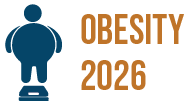3rd International Conference on
Obesity and Weight Management
June 04-05, 2026 | Paris, France

Obesity 2026

Republican Specialized Scientific and Practical Medical Center of Cardiology, Uzbekistan
Abstract:
Abstract:
Obesity, dyslipidemia, and hepatic fat are considered risk factors of coronary artery disease (CAD). Our study aimed to evaluate relationship between body mass index (BMI), lipid profile and hepatic steatosis and fibrosis in patients with CAD.
Material and methods: 92 patients with CAD were prospectively recruited in this study. All patients were performed anthropometric measurements and laboratory tests (total cholesterol, low-density lipoprotein (LDL), very low-density lipoprotein (VLDL), high-density lipoprotein (HDL), serum triglyceride (TG) concentration). Hepatic steatosis in dB/m and liver stiffness in kPa were measured by transient elastography. Relationship between parameters was assessed by Pearson correlation coefficient.
Results: A total of 92 patients were included, of which 42 (45.7%) were men. The mean age was 67.5±5.6 years old. The mean values of the measured parameters were as follows: BMI = 30.4 ± 4.2 kg/m2, total cholesterol = 168.6 ± 31.2 mg/dl, LDL = 91.6 ± 26.4 mg/dl, VLDL = 32.6 ± 21.2 mg/dl, HDL = 47.2 ± 11.3 mg/dl, TG = 162.8 ± 105.9 mg/dl, hepatic steatosis = 274.8 ± 52.5 dB/m, liver stiffness = 5.1 ± 1.2 kPa. In our study BMI had a strong positive correlation with hepatic steatosis (r=0.89) and no other associations with lipid profile and liver stiffness.
Conclusion: Our results suggest that BMI is positively correlated with hepatic steatosis and obesity increases the risk of fatty liver disease in patients with CAD.
Biography:
Alieva R.B. has completed his PhD at the 2019 at the PSSPMCC and postdoctoral studies from RSSPMCC at 2024. He is the director of Lipid Center of Uzbekistan Cardiology Association. She has published more than 85 papers in reputed journals and has been serving as an editorial board member of repute.
